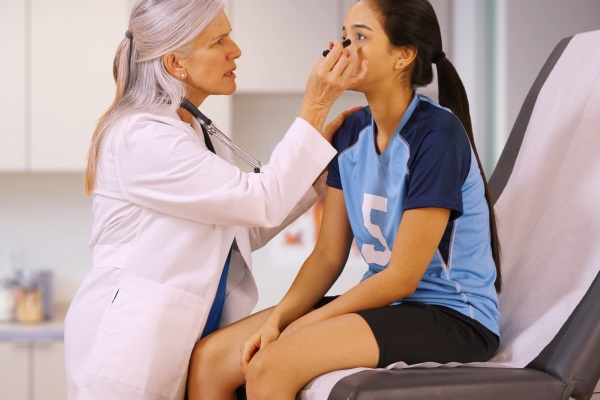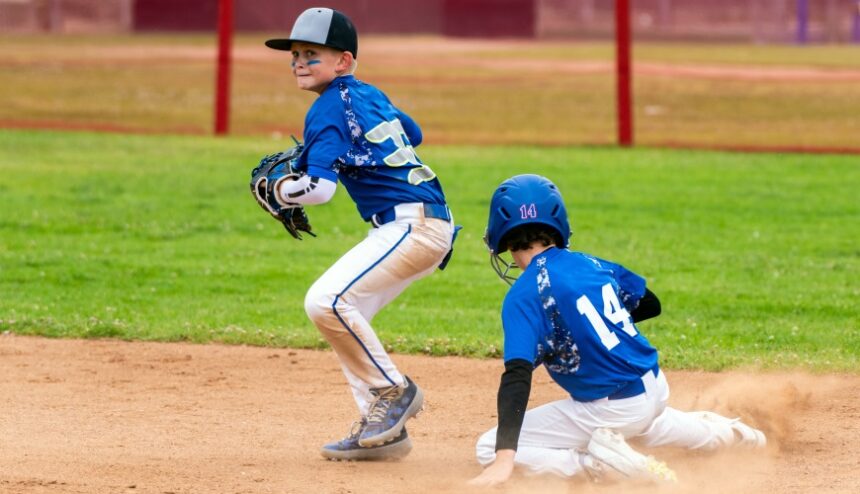By Kelly Shaner, MS, Athletic Trainer (LAT), Registered Orthopedic Technologist (ROT), ImPACT Trained Athletic Trainer (ITAT)
While there is no “concussion-proof” helmet, wearing a helmet that is sized for your child’s age and is appropriate for his or her sport is essential. It must be well maintained, worn correctly, and certified for use by the manufacturer. These tips hold true for helmets of any sport:
- If your athlete’s baseball helmet has been cracked or is missing padding, it’s time to shop for a new one. If damaged during the season, don’t just try to wait it out for another year. Buy a replacement.
- A helmet shouldn’t be kept in the car. Store it out of direct sunlight in a room that isn’t exposed to extremely hot or cold temperatures. This keeps the protective materials from degrading and breaking down.
- A batter’s helmet should be labeled: “MEETS NOCSAE Standard®” to show it has passed tests for performance and protection by the National Operating Committee on Standards for Athletic Equipment.

But what if they get hit?
Brain injuries are serious. The CDC’s HEADS UP program works to “raise awareness to improve prevention, recognition, and response to concussion and other serious brain injuries.” The program began for children and young people in school or sports, but the information could be applied to any age or sport. It includes tips and stories from professional athletes, concussion experts, and even videos from teens and parents who have been affected by brain injuries.
In the case of a head injury, there is always a concern of a concussion. One person may describe the feeling as “I saw stars,” or another may say, “I totally blacked out and can’t remember a thing.” In fact, there are different symptoms in someone who has had a concussion when comparing them to those who are observing their behavior.
After suffering severe brain injury resulting in a concussion, people report symptoms including:
- Headache or “pressure.”
- Nausea or vomiting.
- Problems with balance, dizziness, or vision.
- Sensitivity to light or sounds.
- Feeling sluggish/groggy.
- Confusion or concentration/memory problems.
How a person with a concussion appears to observers:
- Can’t recall events before or after the hit or fall.
- Dazed or stunned.
- Forgets an instruction, is confused, or is unsure of the game, score, or opponent.
- Moves clumsily.
- Loses consciousness (even briefly).
- Exhibits mood, behavior, or personality changes.
Watch for signs of concussion immediately after the injury, as well as a few days later. If the symptoms worsen, take him/her to the ER immediately.
Concussion Care Guide
Download this Concussion Care Guide from Athletic Trainer Kelly Shaner for future reference.
Helmet up!
From bike helmets to baseball, horseback riding, hockey, skateboarding, skiing, lacrosse, and football helmets—click the link for PDFs with information on what you need to know about different helmets for each sport.
Learn more about bicycle safety and helmets on our blog.


